It had been raining on our last night in Krakow and as we walked through the main market square we were pleased to have it mostly to ourselves, in the middle of summer. Most people seem to be scared of the rain!
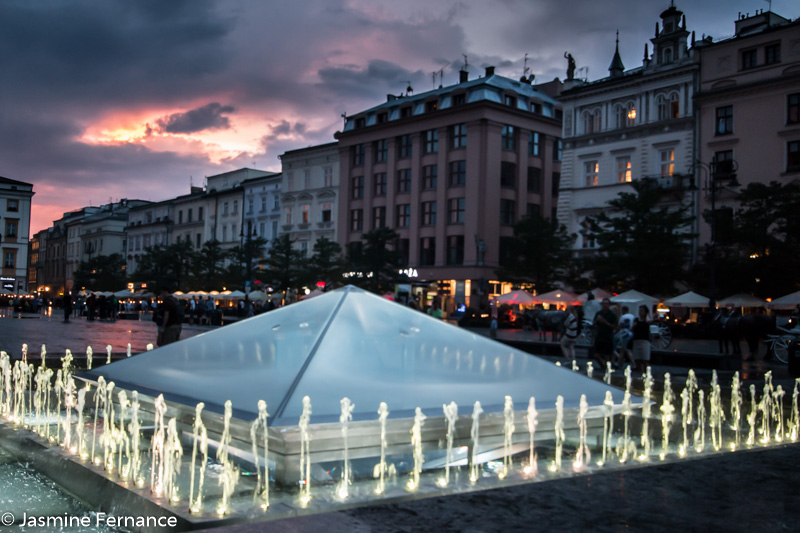
As we wandered we came across a smaller square behind St Mary’s Cathedral where a stage had been set up and a choir stood upon it in front of a large crowd, singing Polish folk songs. There were booklets lying about with the lyrics to the songs and I had a hilarious time with my Polish cousin Krystyna as she sang along and I attempted to. Polish is not easy and I couldn’t seem to get my mouth around the unfamiliar sounds. I later found out that this phenomenon is called Lekcja Spiewania, or ‘Singing Lessons’, where thousands of people gather to learn to sing traditional Polish songs. The audience is the main participant rather than the performer. It was a memorable night.
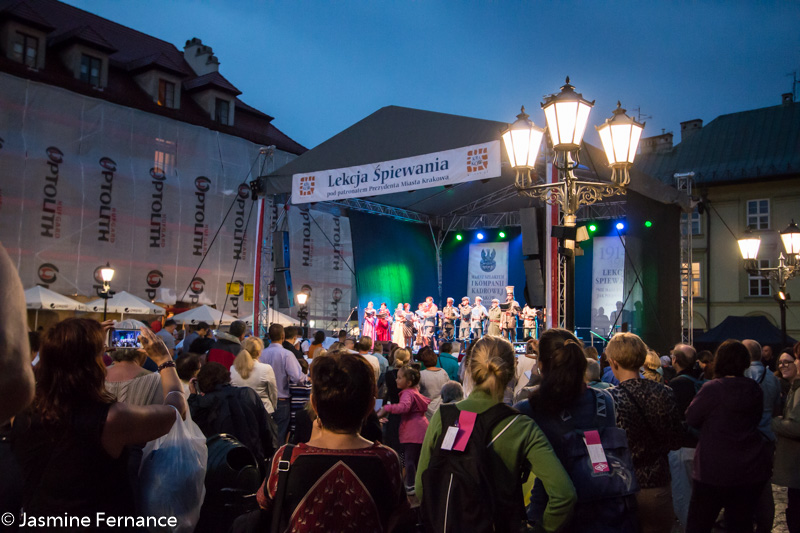
Krakow is the number one city on any travellers hit list in Poland, and with good reason. The buildings were remarkably untouched by the destruction caused to numerous other cities in Poland during WWII, and Krakow’s old town centre and castle remain intact and are wonderful places to visit. The same cannot be said of the people of Krakow, with Auschwitz only 70km away and the majority of Jews from Krakow sent there. Our visit to Auschwitz would come later though, and our first day was spent enjoying the city centre.
Wawel Castle
Wawel Castle is located on Wawel Hill, a 10 – 15 minute stroll from Krakow’s main market square, and was the residence of the kings of Poland from the mid-11th century until the capital was moved to Warsaw in the 17th century. I had basically no knowledge of Poland’s monarchy and a visit to the castle and cathedral inside provided a wealth of information and a fascinating insight into the history of Poland.
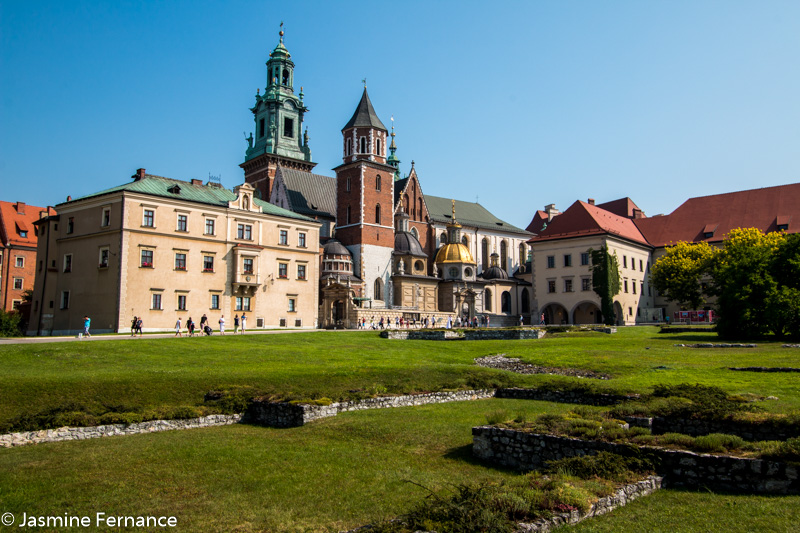
Visiting the grounds of the castle is free, however if you want to visit any of the rooms and exhibitions inside (and believe me you do) then get there early. Tickets are sold based on a timed entry and they sell very fast.
Royal Private Apartments
These tickets are the first to sell out, and visit is by guided tour only. The private lodgings of the royal family, members of the court and royal guests, much was gutted during a fire in 1595. However there are still some amazing original wooden larch ceilings and wall friezes, and the rooms house many Italian Renaissance paintings.
State Rooms
These rooms re-create the appearance of the royal residence from the 16th and 17th centuries. The Deputies Hall includes some freaky looking wooden carved human heads staring down at you from the ceiling. The tapestry collections of King Sigismund II August is also on display here, along with royal portraits and Dutch and Italian old master paintings.
Crown Treasury and Armoury
Original Crown Treasury that has survived wars can be viewed here, including the coronation sword and royal heirlooms. In the Armoury section there are many weapons and armour dating back from the middle ages to the 18th century.
The Lost Wawel
An interesting archaeological exhibition where you descend beneath the castle to view an area of excavation, and where you can view items that have been discovered here, including some ornate stove tiles and many statues.
Lady with an Ermine
Leonardo De a Vinci’s masterpiece can be viewed here, and unlike the Mona Lisa in the Louvre in Paris, it can be viewed in complete isolation away from any crowds.
The Royal Archcathedral Basillica of Saints Stanislaus and Wenceslaus (or Wawel Cathedral for short) has been on Wawel Hill for over 900 years. It was the site of the Polish King’s coronations and is also where most of Poland’s monarchs are buried. Interestingly it is also where Karol Wojtyla was ordained as a priest. He later became Pope John Paul II.
Dragon’s Den
A large limestone cave beneath Wawel Hill, the Dragon’s Den is the home of the mythical Dragon of Krakow.
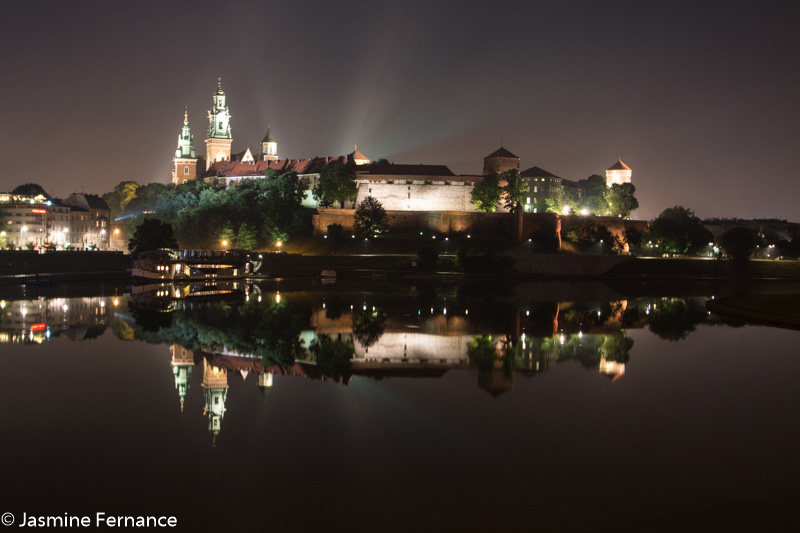
Krakow Old Town
In 1978 UNESCO approved their first ever sites for the World Heritage List, and Krakow was one of the areas named in that year. With the largest medieval market square in Europe, Krakow is often called Europe’s most beautiful city. It’s easy to see why. The Cloth Hall stands in the centre of the square and dates from the Renaissance. The inside is decorated with the coat of arms of different cities in Poland and it used to be the meeting place for international merchants trading in goods such as silk, spices, leather and wax. Today it is filled with souvenir stalls selling everything from Polish amber to traditional Polish costumes for children, bags, fridge magnets, postcards and more. It’s a great place to stop and browse for a while.
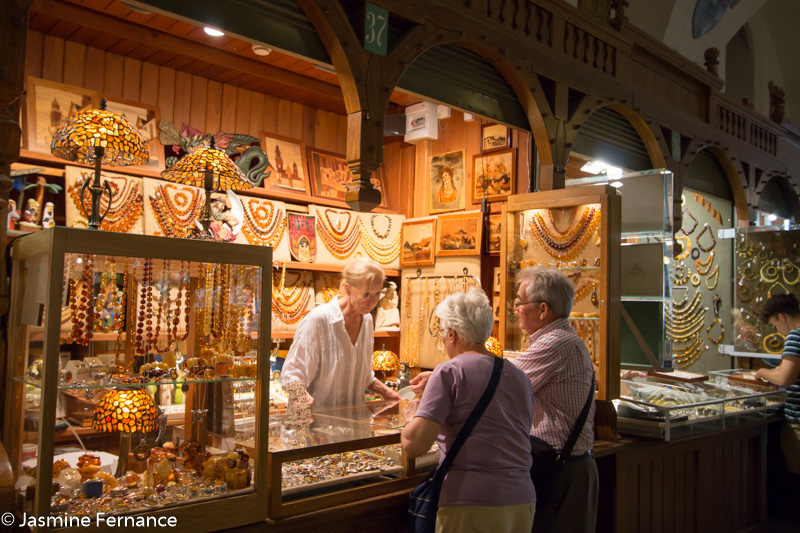
On the north-east corner of the market square stands St Mary’s Basilica, or Church of Our Lady Assumed into Heaven. Built in the 14th century, look out for the trumpet player at the top windows as he trumpets away on the hour. Be sure to wave back to him when he’s done. Inside the basilica is the most amazing altar I have ever seen, the Altarpiece of Veit Stoss. It was carved in 1477 and shows many scenes relating to Mary’s life including her death. The altar was stolen by the Nazi’s during the occupation of Poland and after the war was found in the basement of what was left of Nuremburg Castle. It is lucky to have survived.
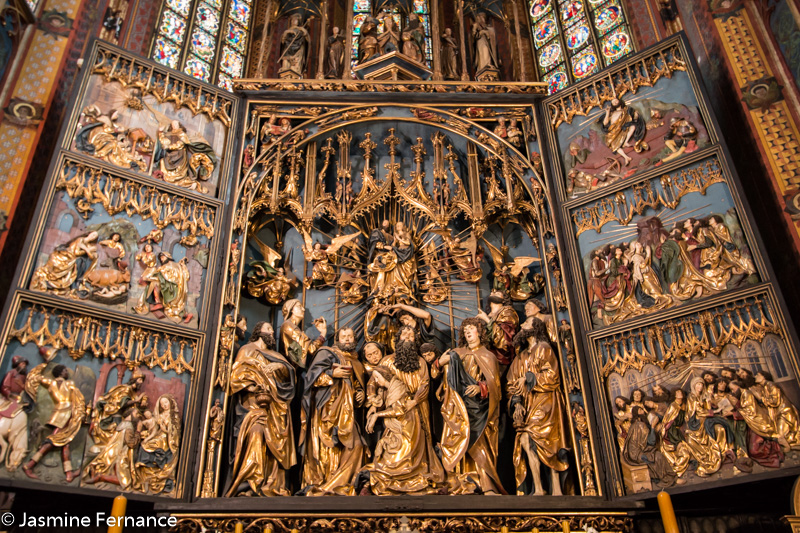
There are over 120 Catholic churches in Krakow, and another favourite to visit was the small church next to St Mary’s, Kosciol Sw Barbary. It is easy to spend a whole day, or even days, wandering the streets of the old town and marvelling at the beauty.
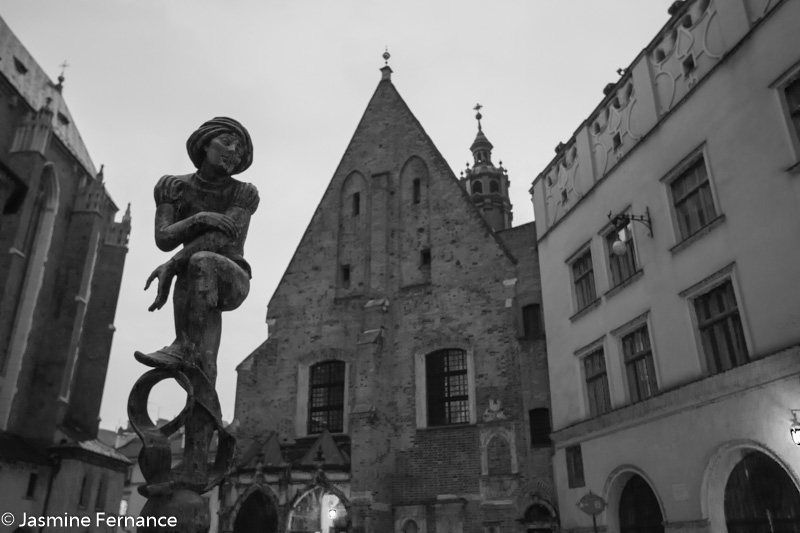
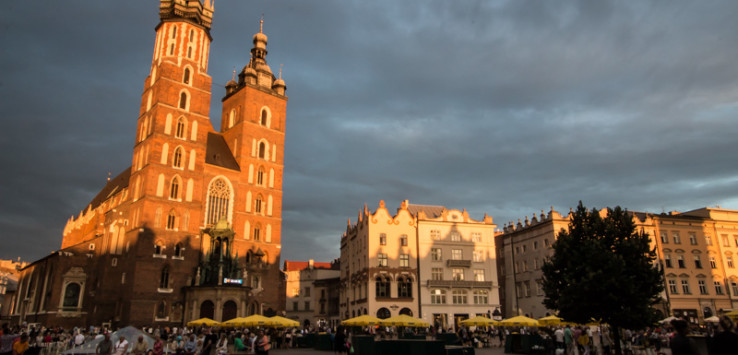
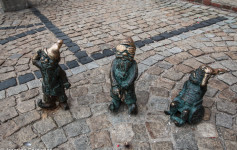
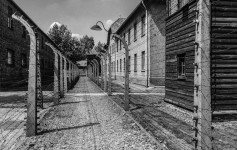
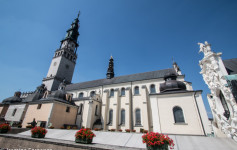
Great write up Jas! Loved Krakow so much! xxx